| Polyarthra dolichoptera: rotifers of the species complex P. dolichoptera/ P. vulgaris possess two ventral finlets (yellow arrowheads). Green arrowheads: striated musculature. (1) |
| |
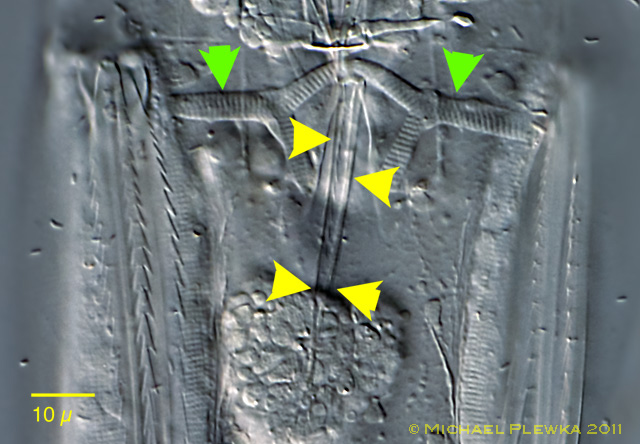 |
| Polyarthra dolichoptera; crop of the above image. (1) |
| |
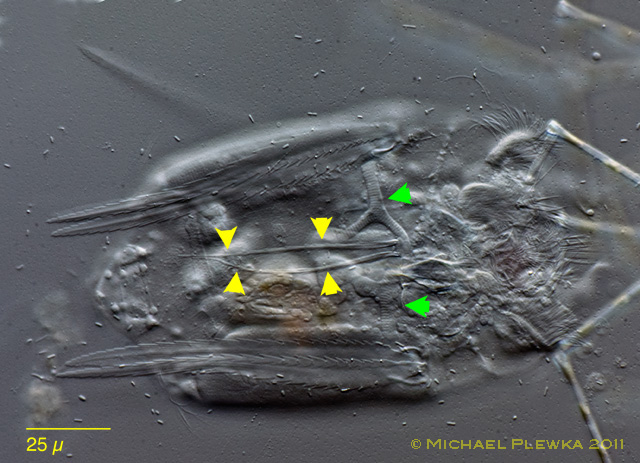 |
| Polyarthra dolichoptera: ventral finlets (yellow arrowheads) of another specimen. Green arrowheads: striated muscles. (1) |
| |
 |
| Polyarthra dolichoptera: the finlets have a serrated outline. (1) |
| |
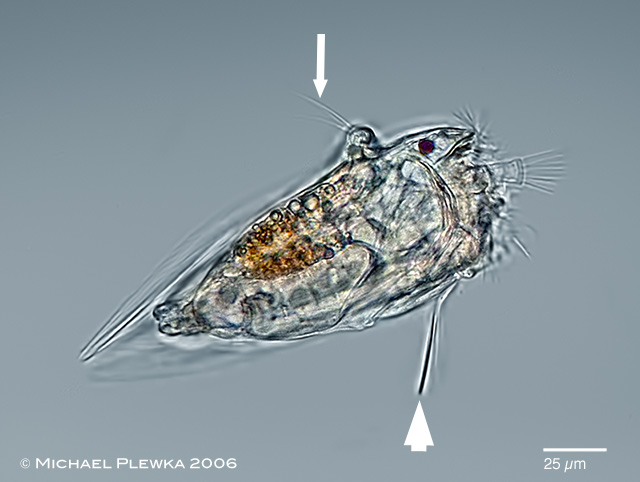 |
| Polyarthra dolichoptera: one of the rare lateral aspects: focal plane on the dorsal antenna ( arrow) and the ventral finlets (arrowhead). (2) |
| |
 |
 |
| Polyarthra dolichoptera: focal plane on the dorsal (upper image) and ventral (lower image) insertion points of the fins. Each of the four packages consists of three fins, which are driven by big striated muscles. The first generation of specimens hatching from resting eggs, however, do not have the these fins and muscles >>> "aptera"-form. (1) |
| |
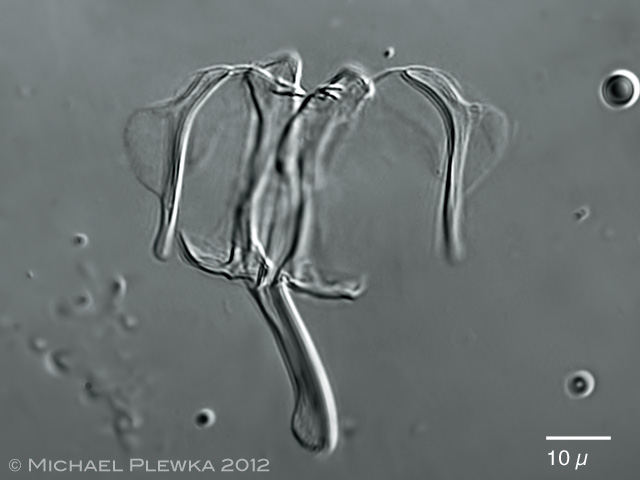 |
| Polyarthra dolichoptera: trophi (Differential Interference Contrast)). (Sprockhövel-Hasslinghausen, pond, 1.6.2012) (3) |
| |
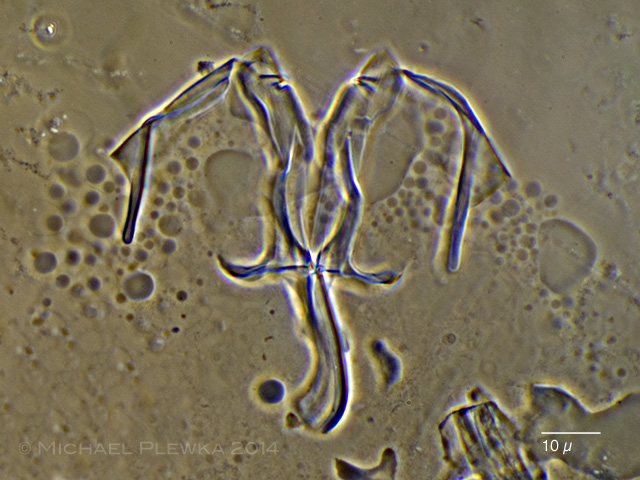 |
| Polyarthra dolichoptera: trophi of another specimen (phase contrast) from (3). |
| |
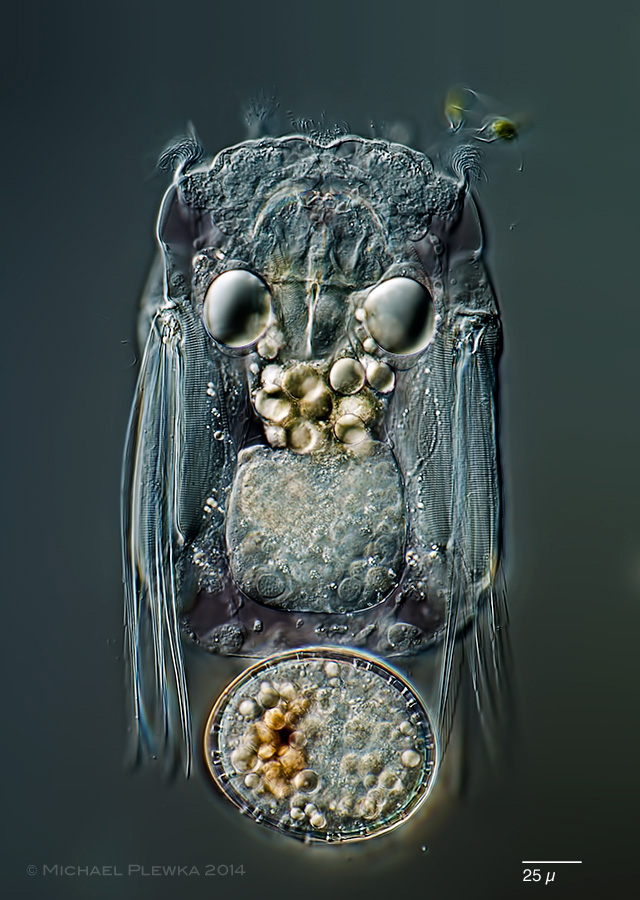 |
| Polyarthra dolichoptera: carrying a resting egg (3). After some generations of asexual parthenogenic (amictic) reproduction via amictic diploid eggs a so-called mictic stimulus (which may be the result of changing environmental conditions) causes a generation of mictic females. These haploid females produce haploid eggs which develop into haploid males if not fertilized. These males produce sperm cells which fertilize other mictic haploid eggs. The result is a diploid egg with a durable shell which may survive bad environmental conditions like aridification or low temperatures. (4) |
| |
|
|
 |
| Polyarthra dolichoptera; resting egg. Upper images: the resting egg has a double shell; the innner and outer shell are separated/ connected? by I-shaped spines.. The eggs are characterized by a polarity which becomes obvious by the orange lipid droplets that are concentrated in one half of the egg. Lower image: focus plane on the spines of the resting egg which is slightly compressed by the cover slide. (4) |
| |
 |
| Polyarthra dolichoptera: the arrowheads point to some structures that may be the nuclei of the developing embryo. (5) |
| |
| |
| Location: Heilenbecker Talsperre, EN (1); Stefansbachtal Gevelsberg, pond (2); (Sprockhövel-Hasslinghausen, Teich, 1.6.2012) (3);Hattingen, Wodantal, pond, (4); Felderbachtal Hattingen/ NRW (5) |
| Habitat: Plankton (1,2,3,4,5) |
| Date:03.06.2006 (2); 02.04.2011 (3); 10.04.2014 (4); 25.04.2020 (5) |
|
|
|